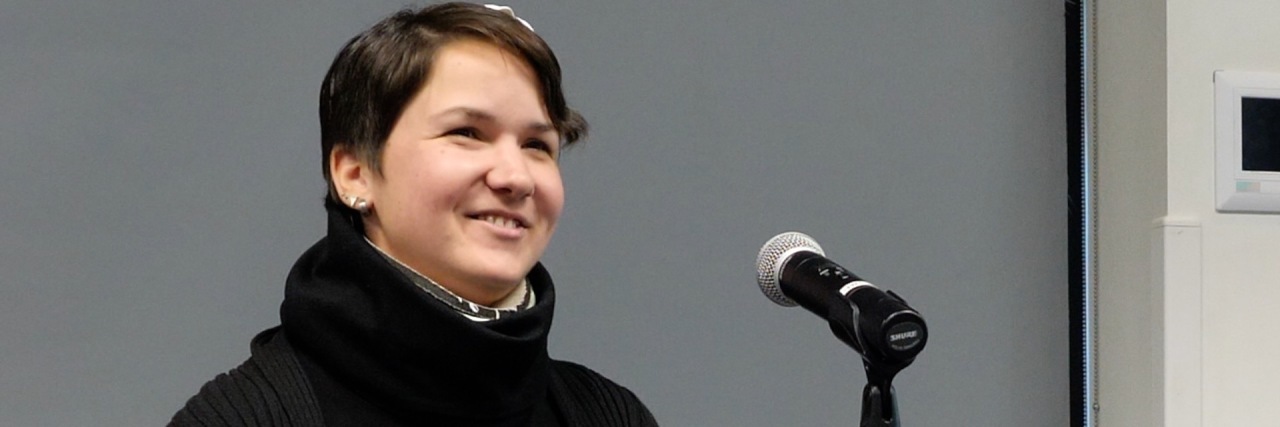How My Ehlers-Danlos Syndrome Journey Inspired Me to Create This Documentary
I will never forget the moment when I was diagnosed with Ehlers Danlos syndrome (EDS) in 2014. After four years of severe symptoms related to a complication of EDS, cervical spine instabilities and no help from doctors in Germany, where I grew up, I decided to fly to the United States to find an expert there.
• What is Ehlers-Danlos Syndrome?
• What Are Common Ehlers-Danlos Syndrome Symptoms?
A few months later, I was sitting in a doctor’s office in a country that I had previously only known from Hollywood movies with a diagnosis I had heard before but didn’t know what it would mean for the rest of my life. The year following my diagnosis, I went through all stages of grief, and I still sometimes do today. It took a long time to accept my new reality: a life with a chronic illness.
The challenge related to Ehlers Danlos Syndrome I struggled with the most was that the illness took away my whole identity for some time. I couldn’t do most things that I loved; I was unable to continue my job, and I lost the abilities for most of my passions. Whenever someone asked me “And what do you do for a living?”, I would feel ashamed and say, “Nothing. I can’t work.” Because people never understood that even though they can’t “see” anything wrong with me, I am still severely sick.
I felt like, all of a sudden, I wasn’t part of any community. I was isolated. And now, not only my symptoms were invisible, I became invisible as a person as well. It took years until I realized that I was worthy for just being me, but this realization didn’t give me back the feeling of having a purpose in life. So I started to write down my thoughts, my worries, my daily life, and almost by fate, I found myself to become a journalist! My German teacher at school would laugh at the irony as I had the worst grades in school — mainly because I was never allowed to write about topics that interested me.
Slowly, but gradually, I dug myself out of the hole I was hiding in, and with every article I wrote, I felt more alive and more visible. I dedicated my work mainly to medicine and science, but when I officially signed up for a journalism degree in Scotland, it hit me! I realized that not only was I feeling invisible and unheard, many other members of my community must feel just like me. And I needed to actively do something about it!
And this is how the idea behind “We Are Visible,” my film about people living with Ehlers Danlos syndrome, was born. First, this documentary was supposed to be a small student project only for my teachers to see, but all of a sudden, it became the center of my life. When I shared the trailers with the community, the resonance was so huge that I felt quite overwhelmed, but I was also proud since filming has cost me a lot: financially and emotionally.
Overall, I filmed in six countries: Germany, Malta, the U.K., the U.S., Belgium and the Netherlands. I followed each family for a few days and tried to catch their challenges as well as their strength to cope with all their Ehlers Danlos Syndrome symptoms. Sometimes, I was too sick to film, and I would lie on the couch in the living room of my contributors, unable to move. Other times, my main subject was too exhausted to get up, and we would film them in bed.
Filming chronically ill people as a disabled filmmaker came with more challenges than I could have ever imagined. Many times, my flights were canceled, or my wheelchair transport service forgot me, and I almost missed my flights. There were several instances when none of our filming plans worked out, because, as you can imagine, Ehlers Danlos Syndrome just happened and someone ended up in the hospital for EDS related complications.
It took me 14 months from starting to film to finalizing the editing process, all of which I did by myself. I just kept investing more and more time and resources as the film took over my whole life. All of the people in my film taught me so much, and I often just ignored the physical consequences a project like this had on my body. I don’t think I can ever produce a feature-length, non-profit film like this again, but I am not regretting a moment throughout the last years!
A few weeks ago, I was invited to be part of the film screening at Chapman University in Orange, CA. It was the first time that I got to see the reactions of an audience while watching the film. And I did not expect people to cry because they could relate so much; because all of a sudden, they felt heard, and they could see their own stories in every one of my film’s contributors.
Even though we had a pretty rough start that day, with lots of tech issues that could have easily distracted a critical audience, none of it seemed to matter after the film screening ended. I experienced a community that was just like me, and that made me feel like everything I invested in this film was more than worth it. Because together, we really aren’t invisible. We Are Visible!
Follow this journey on the author’s blog.
Learn more about the film here:

